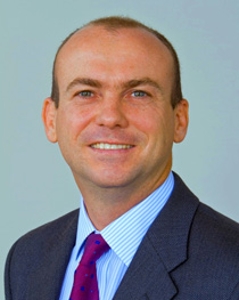Latest Research – Rufus Edwards
Rufus Edwards is interested in emissions... emissions of air pollutants both indoor and outdoor such as those from paint, from cook stoves, from vaping devices, and so on. As part of AirUCI's Health Effects team, he studies the effects of emissions on populations in the industrialized world exposed to combustion byproducts from transportation, wildfires, and tobacco smoke, as well as on populations in less industrialized nations exposed to emissions from household solid fuel used for cooking and space heating. One of his main areas of research is the use of solid fuels as a primary energy provision for cooking space heating and small-scale industries in rural areas, a topic for which he is a highly-cited and acknowledged expert. He has studied this issue in many areas of the world, from Asia to Africa to the Americas.
 Specific research projects include biomass stoves (Mexico, Guatemala, El Salvador, India, Nepal, Kenya, Benin, Tibetan plateau), dung stoves (India, Nepal, Tibetan plateau) and coal stoves (China, Kyrgyzstan, Mongolia) amongst others.
Specific research projects include biomass stoves (Mexico, Guatemala, El Salvador, India, Nepal, Kenya, Benin, Tibetan plateau), dung stoves (India, Nepal, Tibetan plateau) and coal stoves (China, Kyrgyzstan, Mongolia) amongst others.
Rufus has broad experience at a policy level promoting evidence-based policies to reduce air pollution exposures working with government ministries, public health institutes, and other stakeholders. He has been a technical consultant to UNICEF, the World Health Organization, the Swiss Agency for Development (SDC), and the Asian Development Bank (ADB). Rufus was a member of the WHO Indoor Air Quality Guidelines Development Group (GDG). He also collaborated with Dr Karin Troncoso to develop the WHO Household Energy Assessment Rapid Tool (HEART) to conduct rapid situational assessments and stakeholder mapping of a country’s readiness to address access to clean energy. This tool forms a module of the WHO Clean Household Energy Solutions Toolkit (CHEST) developed to reduce the burdens of disease imposed by household air pollution. To date WHO HEART has been applied in more than 15 countries.
He has also worked with the WHO Urban Health Initiative in Accra, Ghana, and Katmandu, Nepal to assist policymakers, academics, and NGOs in identifying evidence-based strategies to reduce city level burdens of air pollution by modelling economic and health impacts using scenario development combined with global burden of disease approaches. Most recently, Rufus has worked with a collaborative team for UNICEF to perform the most up to date assessment of the impacts of air pollution on the health of women and young children in Bishkek, Kyrgyzstan including strategies to reduce exposures, and has worked with the WHO to develop a roadmap to accelerate and scale-up actions to reduce the impact of air pollution on health in the WHO South-East Asia Region.
Along with AirUCI faculty Sergey Nizkorodov and Don Blake, Rufus also recently completed a study on vaping in California that used state-of-the-art chemical analysis to characterize primary and secondhand vape emissions in young adults. Key findings of this project were:
-
In 48 tests covering five flavor types over 64 gas compounds were enhanced greater than a factor 2 in exhaled breaths of users after vaping in comparison to baseline breath before vaping. These included five human carcinogens: benzene, acetaldehyde, 1,2-dichloroethene, trichloroethane, and tetrachloroethylene which were enhanced by factors of 2 – 43 compared to baseline breaths.
-
In a separate analysis of 32 tests, they measured 15 aldehydes directly emitted from e-cigarettes that can damage cells lining the airways. Aldehydes are respiratory tract irritants that can damage cells lining the airways, modify DNA and proteins, damage blood vessel structure, and affect heart contractile function. The vast majority of primary aldehyde emissions were directly absorbed by the lung. Acetaldehyde (100%), formaldehyde (94%), butyraldehyde (97%), and propionaldehyde (81%) were detected in almost all samples. The remaining aldehydes varied based upon flavor and device. Little is known about how different chemical compositions that result from vaping different flavor profiles modulate cell injury and lung inflammation, which promises to be an interesting topic for future exploration.
Rufus and a collaborative team from UCR and UNAM in Mexico also recently completed a study in rural Mexico which deployed the Quick Urban & Industrial Complex (QUIC) to reconstruct the town of Cucochucho in the modelling domain to simulate neighborhood pollution dispersion. Comparison of QUIC simulation with water channel experiments using neutrally buoyant fluorescent dye produced good quantitative agreement. It has long been known that particulate matter (PM) emitted from simple combustion stoves causes major disease burdens to populations globally. While pollution from cook stoves is well known to also be a major cause of poor air quality of cities, the impacts of this pollution at a neighborhood scale in smaller towns and villages is less well known. The simulation results demonstrated that in Cucuchucho upstream households contribute ~30% of area concentrations, and depend on the intervention and community structure (number and packing density of the houses upstream). Based on these simulations, his team developed a statistical model that allows inclusion of neighborhood scale pollution in estimates of regional health burdens from air pollution in Mexico.
Rufus has many policy recommendations based on the application of such modeling to different rural areas, including which type of intervention is appropriate in different built environments to reach WHO interim targets. It is vital for policymakers to have accurate estimates of the benefits of different policy interventions in relation to their cost prior to initiating large scale implementation programs, and Rufus has contributed enormously to the knowledge base relied upon by these policymakers.

